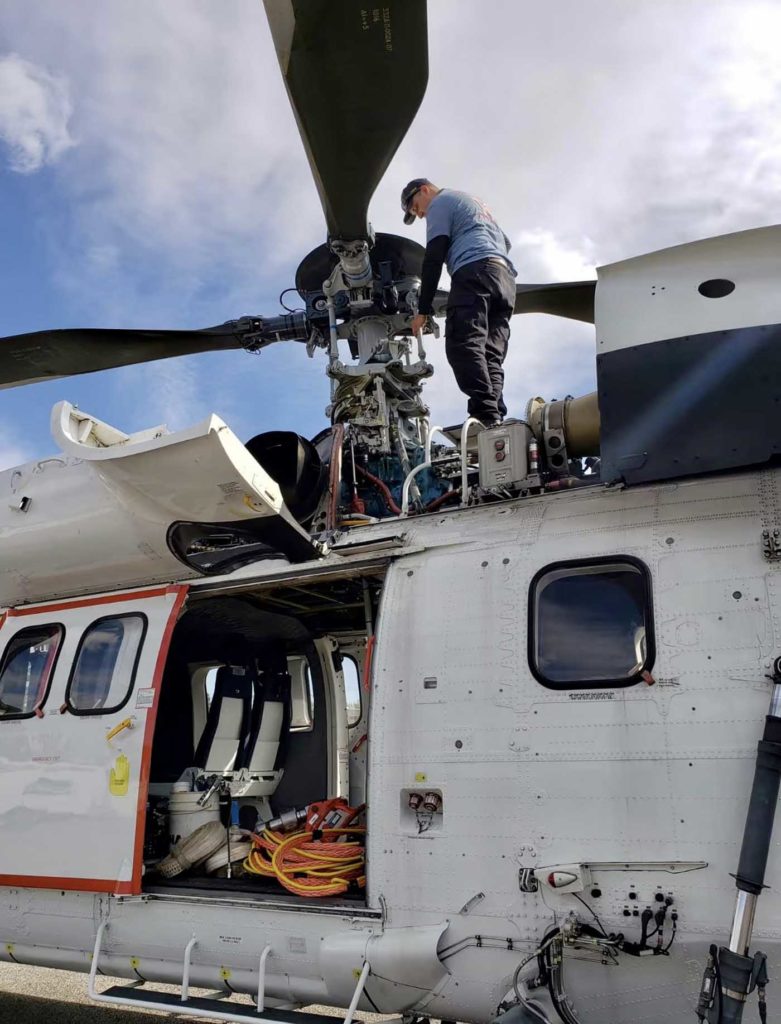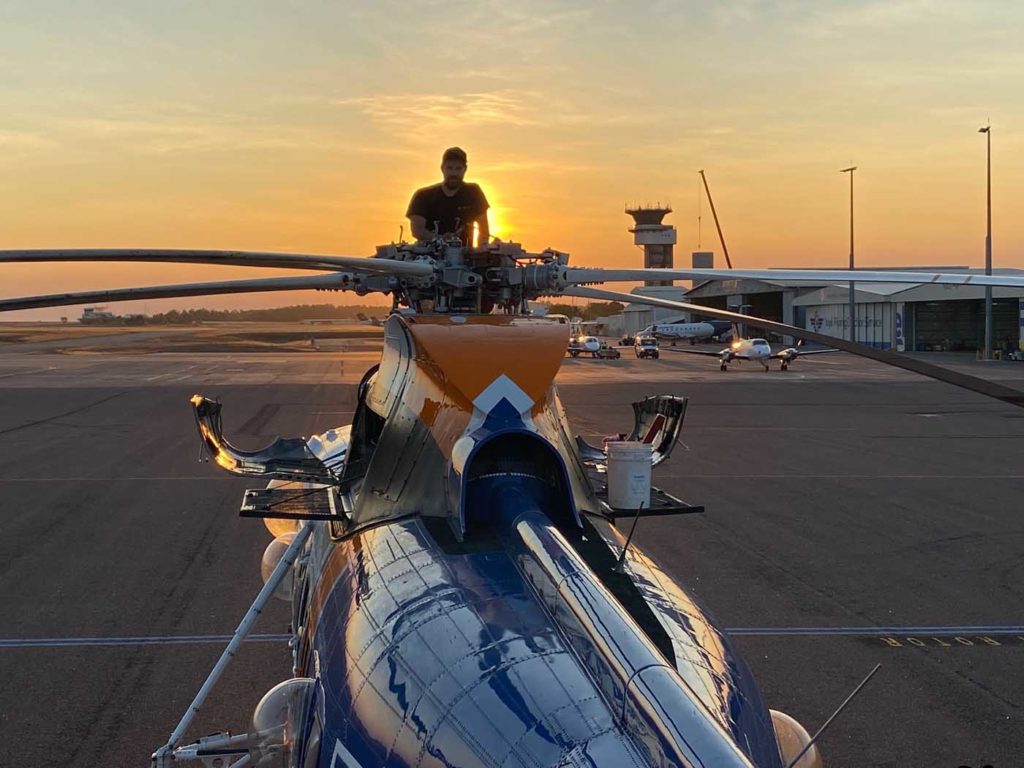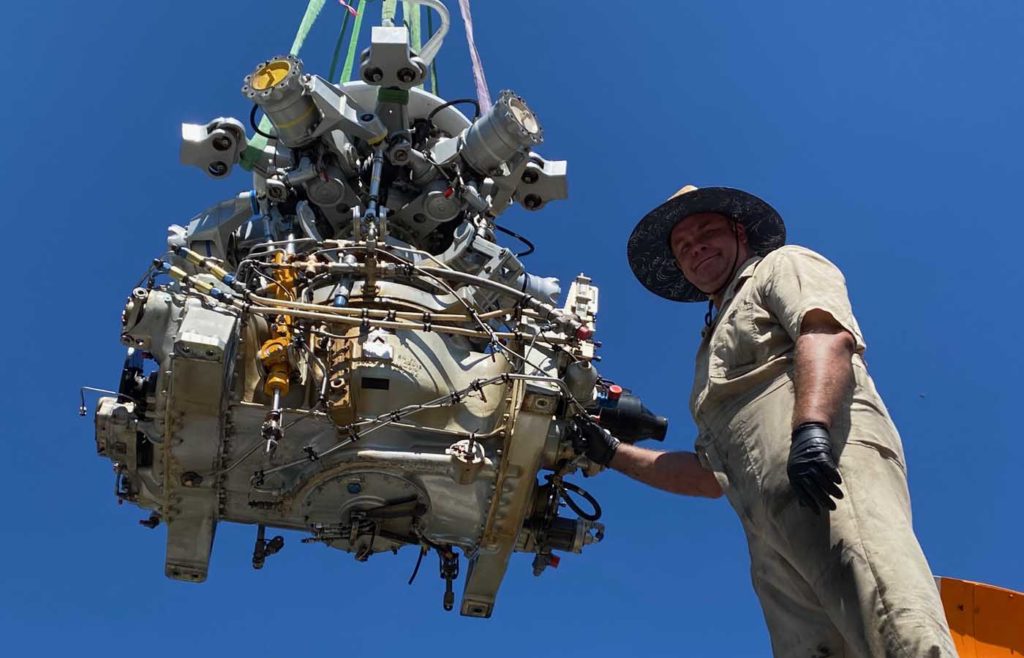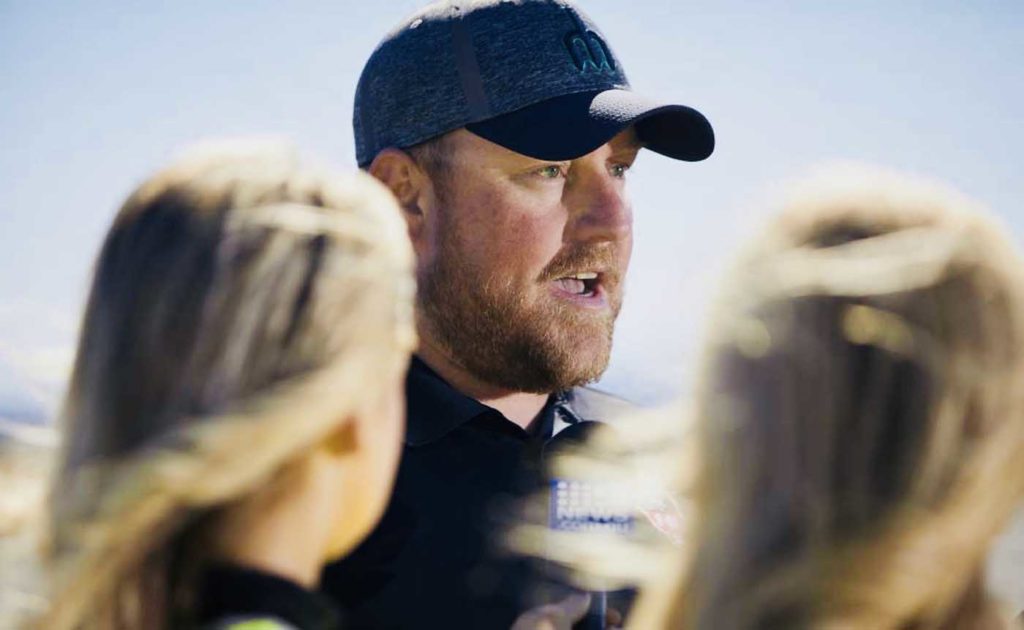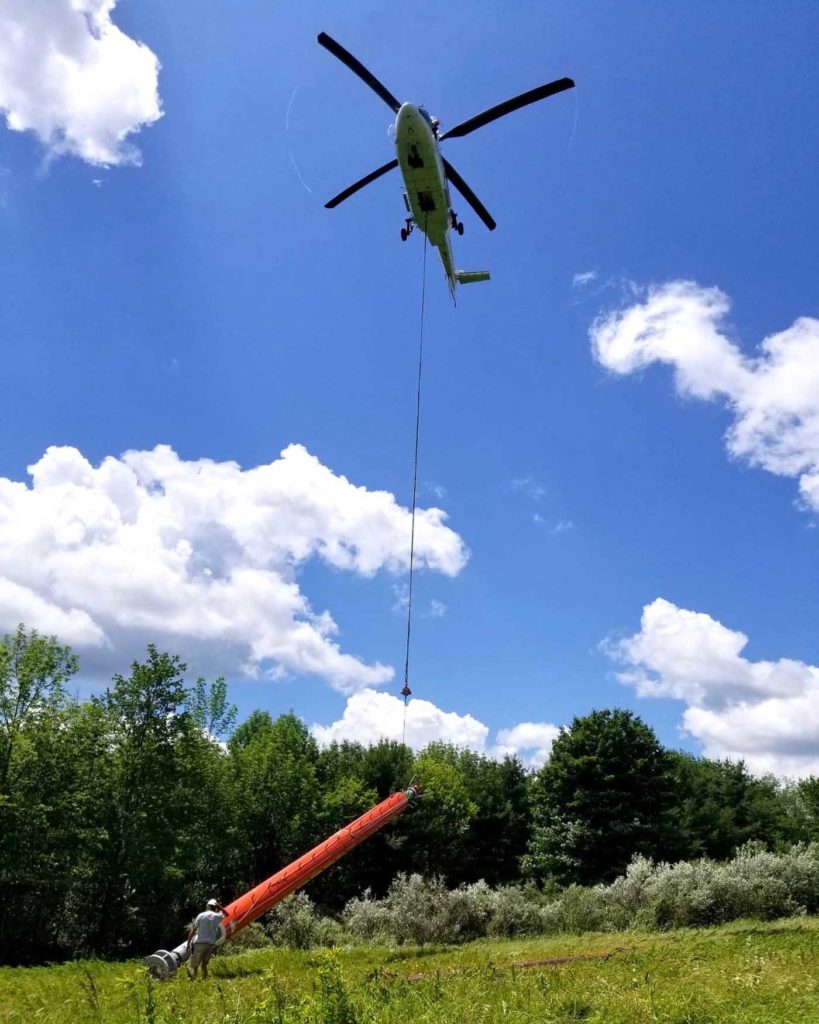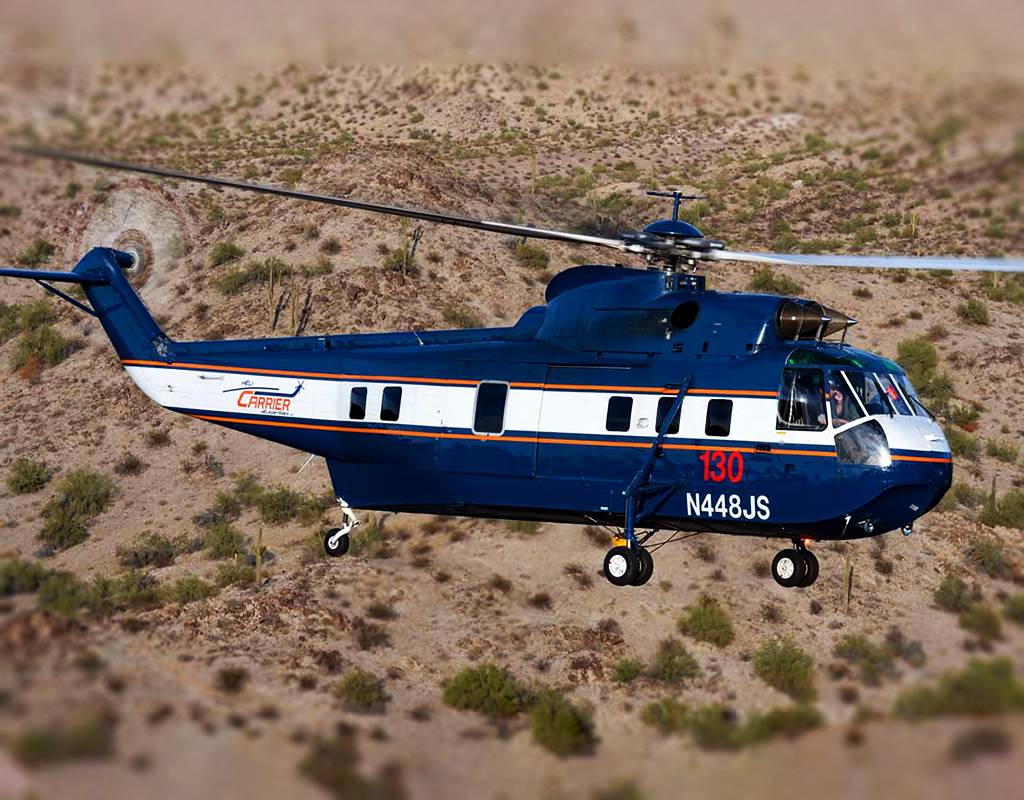
Helicarrier’s “can-do” attitude, combined with its founder’s heavy-lift experience, has led to rapid growth for the aerial lifting specialist around the world.
Helicarrier Inc., a heavy-lift/aerial construction specialist based in Quebec City, Quebec, and Buckeye, Arizona, near Phoenix, has built a big reputation in a small time with a fleet led by two Sikorsky S-61Ns and two Airbus AS332 L1 Super Pumas.
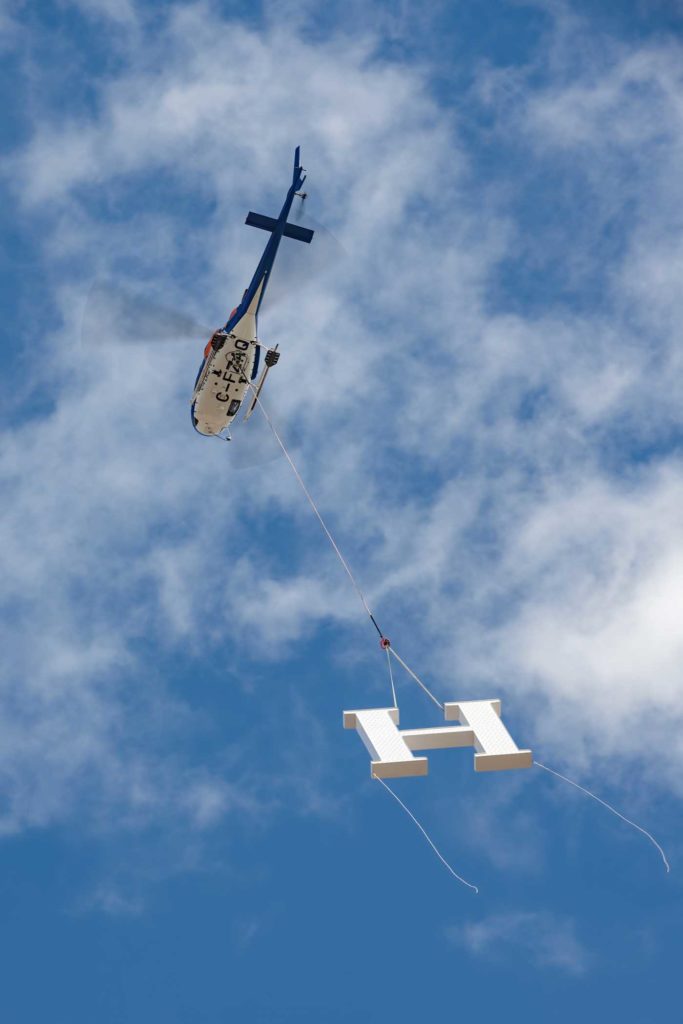
But it wasn’t long ago the company was little more than a long-held ambition for owner Fred Carrier. Having completed his flight training in 1998, Carrier spent the next 10 years with Canadian Helicopters, performing mostly external load operations. He then joined VIH, where he was first introduced to the S-61.
The economic downturn of 2008 hit domestic operators hard, but VIH had overseas contracts that provided Carrier opportunities to continue working, mostly flying the S-61 in Africa and Australia.
The following year, while working the fire season in Australia, Carrier learned VIH had sold a number of S-61s to an operator in South America. “I didn’t know where my career would end up,” said Carrier. “So I began thinking every pilot’s dream: to buy his own machine and have his own little show going.”
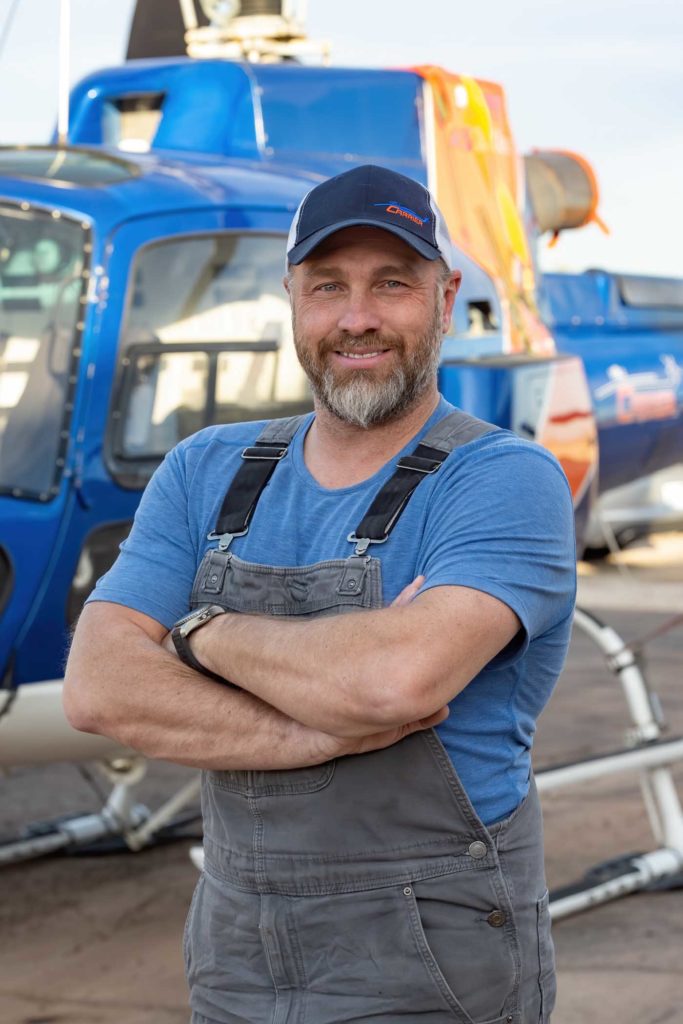
In the winter of 2010, when Carrier came back from Australia, he and his uncle, Richard LaFrance, began looking at helicopters to purchase. “We went to look at a 2000 [Airbus AS350] B3, which had just been rebuilt after an incident in the U.K,” said Carrier. “And it was like being in a car dealership — it was all shiny and sparkly — it was basically zero-time, like a new helicopter. [The] only thing that was not new was the Turbomecca [Safran] engine: it had only 600 total hours, but had been ‘zeroed’ during overhaul. So I bought the helicopter on the spot. On the drive back home we realized we now needed to start a company.”
By spring, Carrier had partnered with LaFrance and together launched Helicarrier Inc. While Lafrance had no experience in aviation, he was a mechanical engineer and the two men shared a passion for anything mechanical. “It started as a one-man show, and that was me,” said Carrier. “We had one machine. I was wrenching, I was flying, I was doing it all.”
That season, Carrier and his B3 found work on fires and small lift jobs. He understood, however, if he ever hoped to compete for the type of jobs with the large operators he was accustomed to working on, he would need more than one aircraft.
By the fall, Carrier purchased his second AS350 B3. Over the next several years he acquired additional AS350s at the rate of one per year, sometimes selling one to purchase another.
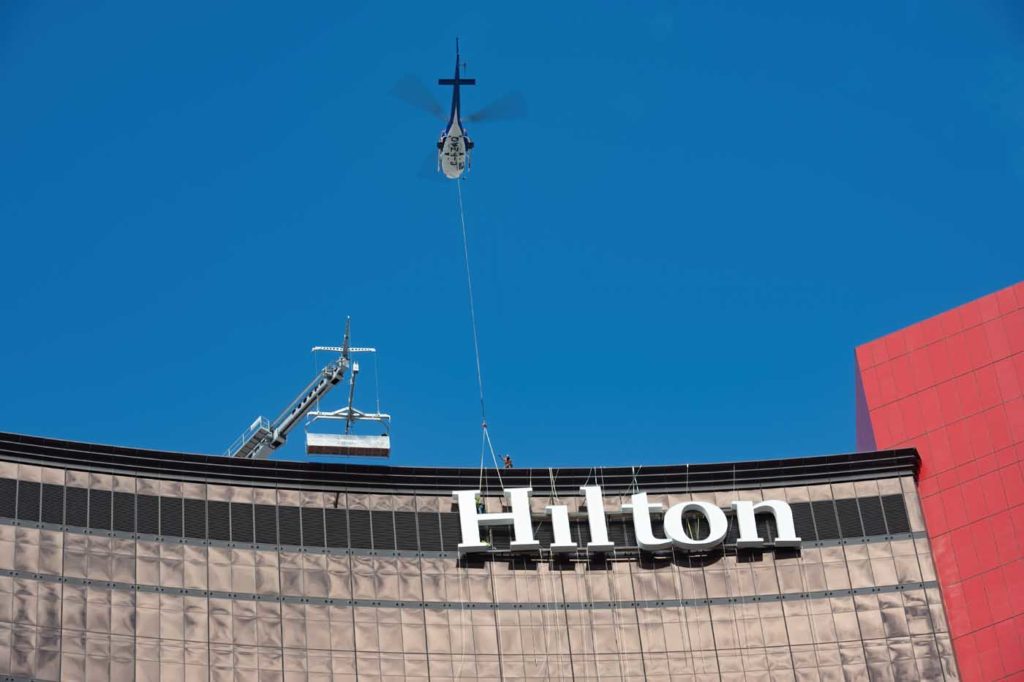
Before new aircraft were added to the fleet, Carrier carefully considered the character of each prospective candidate who’d be operating and maintaining the aircraft and representing the company. “In this industry today, anybody with money can buy helicopters,” said Carrier. “But what you need is not helicopters, it’s people.
“I always, always only hire people I know,” he continued. “People I’ve worked with or people that my people have worked with and know. We hire on reputation. So we’re not selling our machines — we have the same machines as the other guy. What we’re selling is our people. That’s how we built up this company.”
Moving into the heavy world
In 2014, Carrier learned the S-61s sold by VIH to the South American operator — the very same aircraft he had flown and was intimately familiar with — were back on the market.
“I loved that machine, it’s my favorite aircraft ever,” said Carrier. “So I started thinking: ‘I’m not going to do like all the others and step up to an intermediate and buy a [Bell] 212 or a 205. There’s enough of those in Canada. So since I already know what the 61 can do, why don’t I just go get one of the machines that I like and I know and used to fly?’ So I went to Brazil, I looked at one, I made an offer and it was accepted, and we imported it back to Canada.”
-
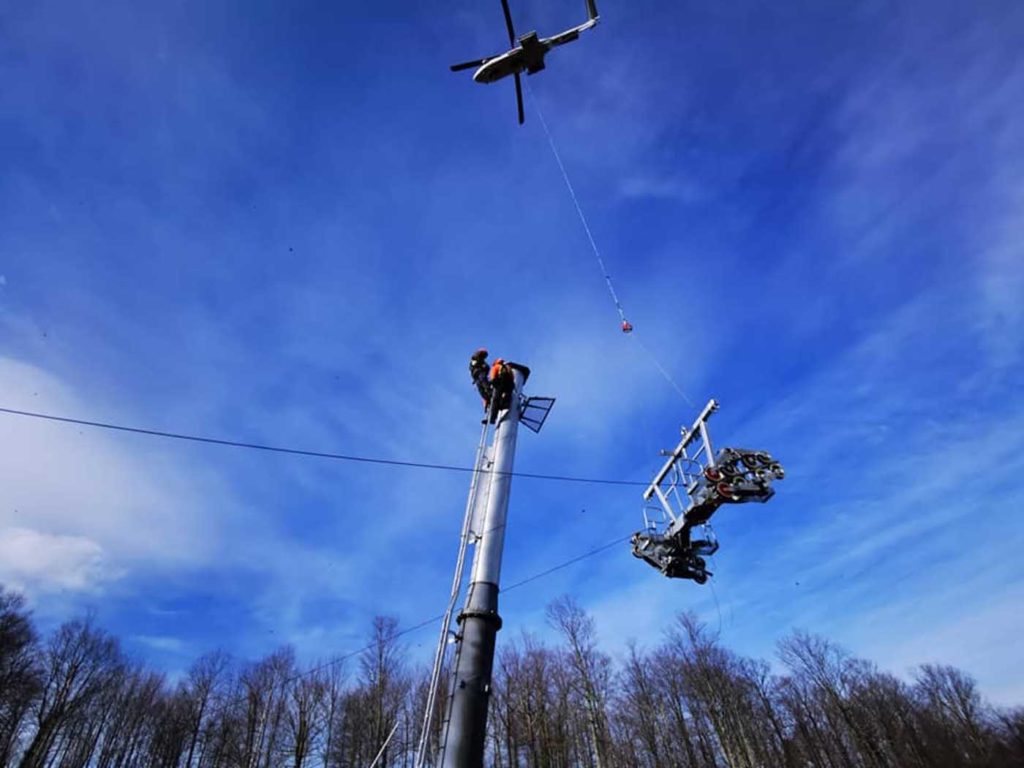
As standard-category aircraft, the S-61 and Super Puma can be flown in Canada. Helicarrier Photo
Many local operators were skeptical about Carrier’s acquisition, believing there was not enough work for a heavy machine. But in the S-61’s first year, a busy fire season indicated the investment may indeed pay off. The following year it was sought after for firefighting, Canadian mining operations and cargo hauling in the Arctic.
Around this time, Carrier became acquainted with Aaron Lighter — an ambitious and highly-regarded American pilot. A member of Carrier’s team recommended him as a good fit for Helicarrier’s S-61 program, so Carrier invited him to be a second pilot aboard his S-61 on a cement pour job in the U.S.
“I didn’t know Fred [Carrier] from anybody,” said Lighter. “He was French Canadian and talked funny! But we had the same work ethic: if there’s 24 hours in the day, then you can work 29 of those hours. And we love helicopters. We love everything about helicopters, from the mechanics of it to what it takes to get it to go. It was kind of a good fit.”
There was good chemistry between the pair and Carrier invited Lighter for other lift jobs in the States. Carrier offered Lighter a line pilot position but also realized that, with his experience with the Federal Aviation Administration and operations in the U.S., he could be far more valuable as a business partner.
At the time, however, Lighter was committed to a night vision goggle firefighting program in Australia with another operator, and could not leave until he’d met those obligations.
In 2017, when Puerto Rico was ravaged by Hurricane Maria, Helicarrier’s S-61 went down to aid relief efforts. The customer was so impressed with the capabilities of the aircraft, they asked Helicarrier if it could provide a second machine. Carrier again called on Lighter.
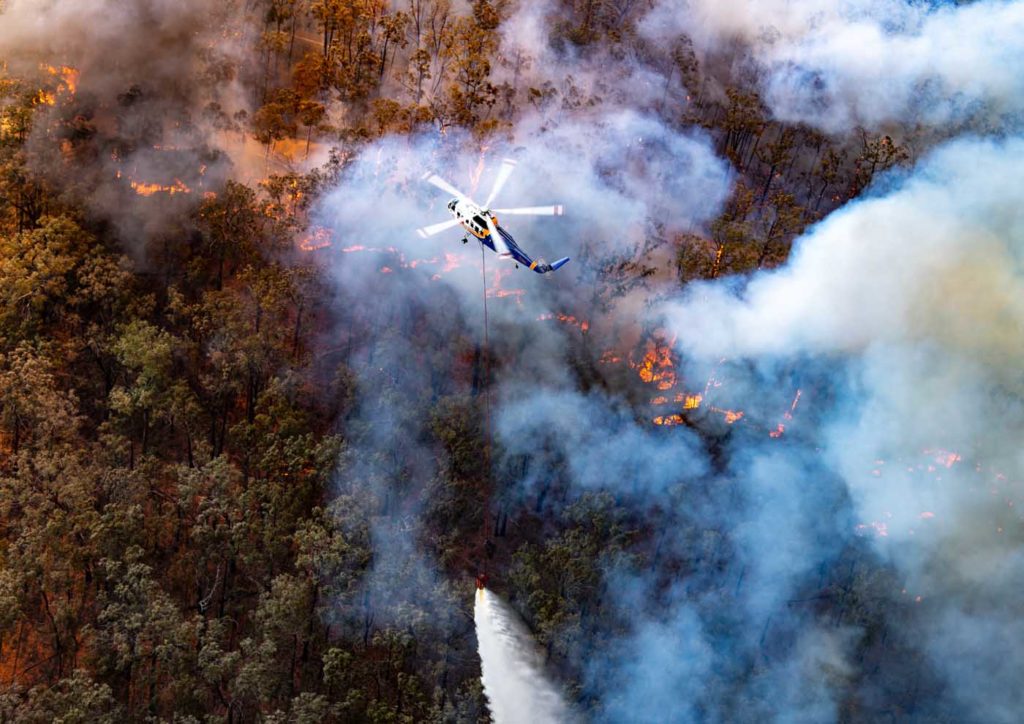
“Fred reached out to Carson [Helicopters],” said Lighter. “And because of the relationships I had at Carson, it took basically a phone call and a signature and off we went to Puerto Rico with the second 61.”
The machine received from Carson was a “short body” model, modified from the original configuration by removing a 50-inch section of fuselage. The mod significantly improved lift performance, making it well suited for the utility and construction market.
Helicarrier’s original S-61 was a standard “long body” configuration, originally manufactured as a people hauler. Over the years, operators discovered its versatility and it, too, has become popular with utility and firefighting operators.
“If you want to put people in it, you can,” said Lighter. “You can put a belly tank on it, you can sling things with it, you can rappel out of it, you can hoist out of it, haul internal cargo. . . . It’s just a really awesome helicopter to do anything you want to do, whatever it may be.”
“I love the 61’s versatility,” said Carrier. “You’ve got an aircraft that has a 10,000-lb. (4,550-kg) payload, all the little problems have been worked out of them, they’re easy to maintain, they’re really powerful, really capable, and they don’t cost that much. If you want to buy an aircraft today that can do that kind of work, you’re looking [at] $25 to $30 million. And with the 61, you’re going to do that job for $4 or $5 million.”
Lighter and the Helicarrier crews spent nearly eight months working in Puerto Rico with Lighter splitting his time with his other work in Australia. When Lighter finally joined Helicarrier full-time, Carrier took advantage of the opportunity; the two men created a partnership and established Helicarrier USA in Arizona.
Adding the Super Puma to the fleet
Having had success in the heavy-lift market, Helicarrier looked to add to its fleet. In late 2018, three AS332 Super Pumas were located in storage in Canada, having served the offshore oil-and-gas industry in the past. Helicarrier purchased the aircraft, adding two to its fleet, selling the third to another operator.
While the Super Pumas have a similar lifting capability as the S-61, their speed, single pilot operation and performance at altitude enhances Helicarrier’s offerings. And, like the S-61s, they are also standard category aircraft — enabling Helicarrier to offer passenger movement.
Lighter explained, “Because of what we’re doing — cross-border relations between Canada and the U.S. — you can’t fly a restricted category [aircraft] in Canada, which is one of the reasons Fred and I decided to shy away from the [Boeing] CH-47s and the [Sikorsky UH-60] Black Hawk. When everybody else was going down that path, that’s what led us to the Super Puma, being that it’s a standard category aircraft we could operate in Canada and the U.S.”
Two years ago, Helicarrier expanded its heavy-lift and firefighting operations beyond North America to Australia, Indonesia and South America, bringing the professional “can-do” enthusiasm that was established as a foundational element of the company.
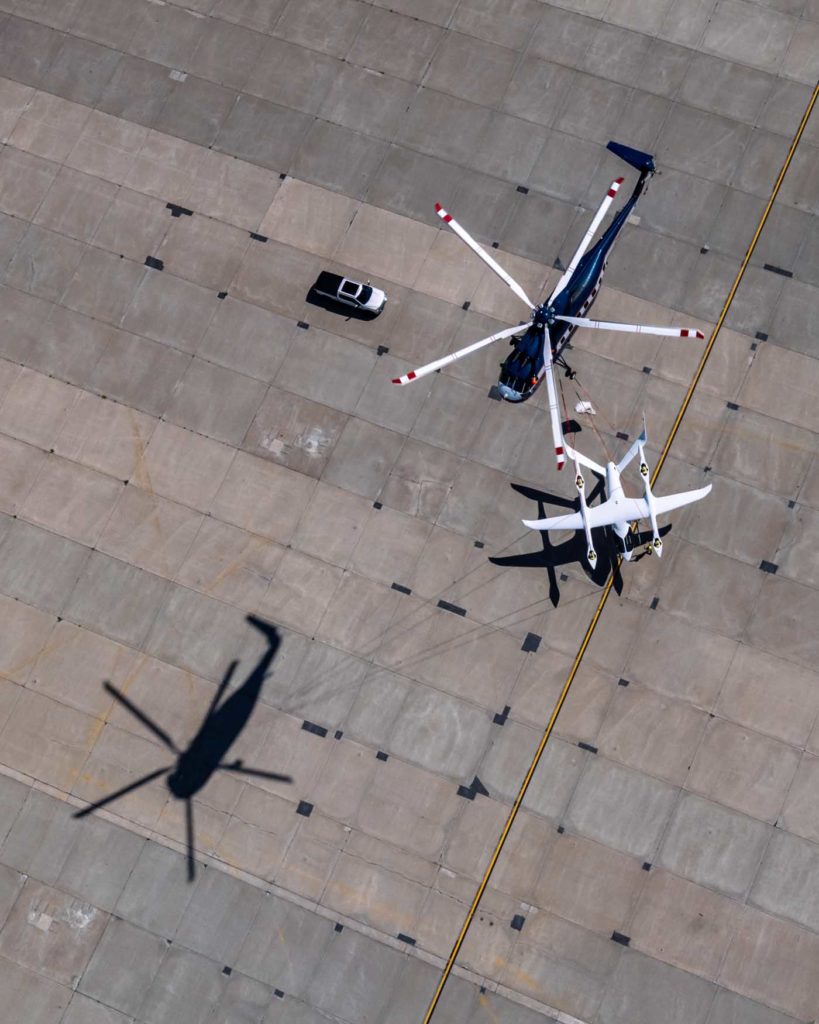
“We want to always be in a position, when the phone rings and somebody wants to do whatever it is, we want to be able to say, ‘Yeah, we can do that,’ ” said Lighter. “I think that’s something we really pride ourselves on with our ‘get it done’ attitude.”
And the key to doing that is the quality of Helicarrier’s people. “I preach this all the time when people walk up and ask about the helicopters — if you don’t have the people, you might as well fold up,” said Lighter. “Because the parts, the pieces, the helicopters, all that stuff — that’s super easy. But if you don’t have people that are on your same wavelength or program, just close the doors because it’s not going to happen.”
Finding qualified people, however, is one of the major challenges faced by operators across the industry, and it’s especially true in regards to the S-61. Overall, there are very few people who are super knowledgeable about these aircraft, particularly in regards to mechanics and engineers. As such, they are a prized commodity.
One pillar of Helicarrier’s S-61 program is Anti Neeme. With a 28-year history with the S-61 and six years with Helicarrier, he’s regarded by Lighter as “The Godfather” of the 61. “There’s nothing the boy doesn’t know about the thing,” said Lighter.
“….the parts, the pieces, the helicopters, all that stuff — that’s super easy. But if you don’t have people that are on your same wavelength or program, just close the doors because it’s not going to happen.”
“I started my career by skipping the [Bell] 206s [and] 212s and started right on the 61,” said Neeme. “I was fortunate to start with a company that flew a lot. I gained valuable experience and became a crew chief after two-and-a-half years, six months after gaining my AME license.”
The shortage of qualified maintenance personnel is a source of concern for Neeme. “It’s hard to find good people with experience. The time of the high-hour flying jobs is over, making it difficult for the next generation of AMEs to gain experience. The 61 world is up and down and during the slow times, no one is training. When things pick up again, there is going to be a shortage of people.”
Going forward, Helicarrier is relying heavily on Neeme and the other experienced members of the team to bring along the youngsters, those with an aptitude and desire to learn. The goal is to grow the company’s experience level from within.
In addition to the heavy-lift aircraft, Helicarrier also operates one Robinson R44 and four Airbus AS350 B3s — and it was one of the latter that illustrated the company’s expertise during a recent aerial construction job in Las Vegas.
On a chilly December morning on the infamous Las Vegas Strip, Carrier and his AS350 B3 showed up to install signage atop a new mega-resort under construction. The project called for a helicopter to lift 18 large metallic letters, each weighing 1,000 to 2,200 lb. (450 to 900 kg), to the top of the twin 68-floor towers. There, the pilot would precisely guide each letter into the hands of workers, perched on scaffolding, who would then secure them in place.
“When we did the pre-job meeting, I told them this was two hours’ worth of work,” said Carrier. “But they didn’t seem to believe me. They thought it would take two days or something like that.”
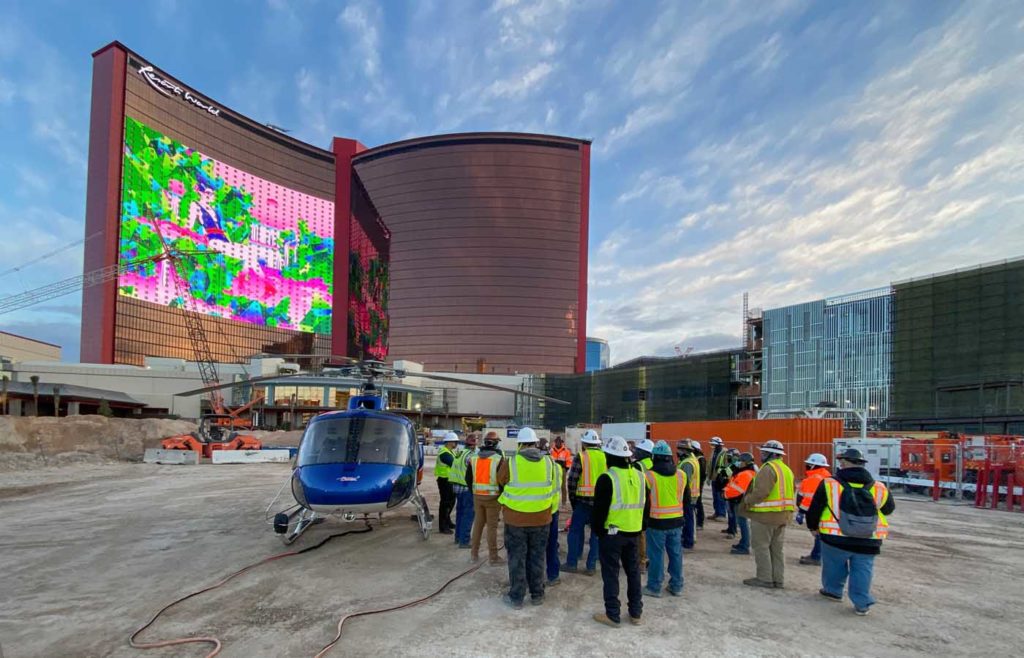
For the initial loads, Carrier estimated each evolution would require six minutes per letter. As the morning progressed that time was cut down to four minutes. Overall, the job required a total of 4.5 hours, but the delays were caused by construction personnel needing time to move to different locations on the building to receive letters. Carrier’s original flight time estimate was nearly spot on — just shy of two hours.

While Carrier certainly thrives on the challenges of aerial lifting, refining skills and problem solving, it may be working the machinery that truly inspires him. “I’ve never really been into aviation. I was never passionate about aviation. I was a mechanic, I was an operator. I love machines and the helicopter is the ultimate machine for me. That’s why I’m in this business.”

